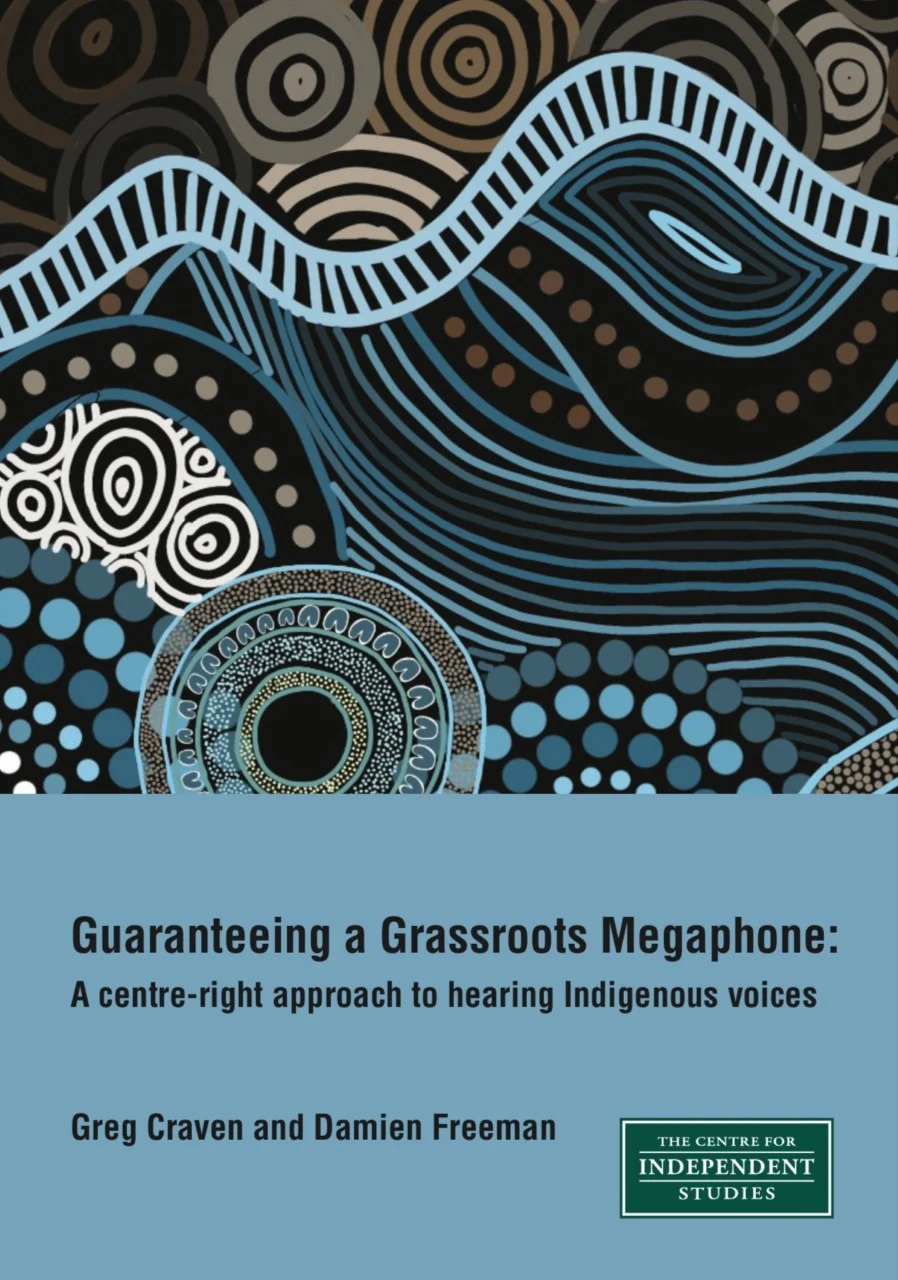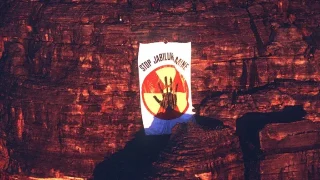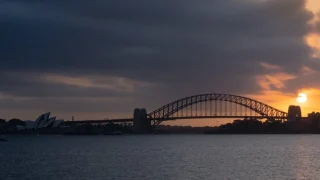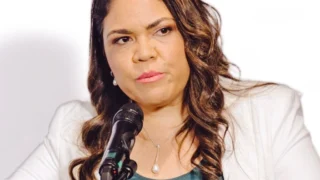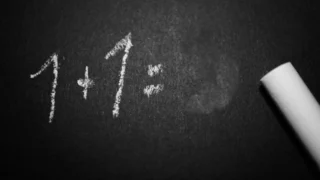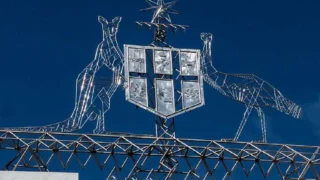
Guaranteeing a Grassroots Megaphone: A centre-right approach to hearing Indigenous voices
He said it was not a road-to-Damascus type conversion. Shortly before the federal election in 2007, John Howard explained that his newfound commitment to holding a referendum to recognise Aboriginal and Torres Strait Islander peoples in the Constitution was “little more than an affirmation of well-worn liberal conservative ideas. Their roots lie in a Burkean respect for custom and cultural tradition and the hidden chain of obligations that binds a community together.”1
The Prime Minister was addressing the Sydney Institute on the need for constitutional recognition of Aboriginal and Torres Strait Islander peoples. He said:
I believe we must find room in our national life to formally recognise the special status of Aboriginal and Torres Strait Islanders as the first peoples of our nation. We must recognise the distinctiveness of Indigenous identity and culture and the right of Indigenous people to preserve that heritage. The crisis of Indigenous social and cultural disintegration requires a stronger affirmation of Indigenous identity and culture as a source of dignity, self-esteem and pride.
Howard acknowledged a clear and unambiguous truth about the legacy of the past: “I recognise that the parlous position of Indigenous Australians does have its roots in history and that past injustices have a real legacy in the present.” Thus, he committed himself to constitutional recognition of Indigenous Australians, explaining, “In the end, my appeal to the broader Australian community … is simpler, and far less eloquent. It goes to love of country and a fair go. It’s about understanding the destiny we share as Australians – that we are all in this together.”
Howard lost the election and the Liberal and National parties would not return to power for six years. Every government and opposition since Howard left office has affirmed his commitment. The next Liberal Prime Minister, Tony Abbott, felt the same sense of unfinished business that John Howard had. He said, “We will get constitutional recognition and, when it comes, I suspect that it will take the form of a pact, a heartfelt pact between Indigenous people and conservative Australia.”
In 2015, Abbott announced that a Referendum Council would be appointed to identify a constitutional amendment that delivered this heartfelt pact. The Referendum Council conducted a series of regional dialogues with Indigenous people, and these culminated in the First Nations National Constitutional Convention at Uluru in 2017. The outcome of that convention was the Uluru Statement from the Heart, which called for “the establishment of a First Nations Voice enshrined in the Constitution.” The Referendum Council’s final report recommended that the Constitution be amended to make provision for such an Indigenous advisory body. Thus, it was through the Referendum Council announced by Abbott that we established how Indigenous people want us to implement Howard’s commitment to “find room in our national life” to “recognise the distinctiveness of Indigenous identity and culture and the right of Indigenous people to preserve that heritage.” When the report was considered by Malcolm Turnbull’s cabinet, the recommendation was rejected, and it has not since found favour with Howard or Abbott.
Warren Mundine’s path to constitutional recognition
In the week leading up to the Uluru convention, Warren Mundine published a paper calling for practical recognition of Indigenous people. Mundine wrote:
The pathway to constitutional recognition holds profound importance for today’s Australian nation and for all Australians. To understand its importance, however, requires us to understand the power of legal silence about the peoplehood of our mobs in our nation’s birth certificate. Silence may not seem harmful. But silence can validate invisibility. From 1788 until 1992, there was a great silence about each of our mobs’ country, and this silence persists in Australia’s constitutional arrangements. Non-Indigenous Australians need to go on a journey to understand why this silence is so harmful to our mobs and to the Australian nation.2
Mundine identified the following challenge for advocates of constitutional recognition:
Symbols don’t deliver outcomes, however, even if they do help inform a narrative of what a referendum about Indigenous recognition is designed to achieve. Those of us who are committed to resolving this important issue urgently need to look beyond symbolism to Indigenous aspirations for constitutional recognition on the one hand, and mainstream concerns about it on the other. We need a model for constitutional change that will allow our fellow Australians to get past their own scepticism, but which also provides practical recognition for each of our mobs.3
Although he is sceptical of the current proposal, Mundine’s contribution in 2017 was to focus attention on the need for a bottom-up rather than a top-down approach. He argued that if a constitutional guarantee that Indigenous voices will be heard when making laws and policies relating to Indigenous affairs is to be be credible, it has to be anchored by the diverse voices of local Indigenous communities. This had a profound effect on the direction that future discussion took. The co-design process chaired by Marcia Langton and Tom Calma provided a first attempt at working out the detail on how to do this, by mapping out how Indigenous voices could best be heard at a local, regional and national level in its 2021 final report.
On 30 July 2022, when speaking at the Garma Festival, the Prime Minister, Anthony Albanese, announced the government’s intention to hold a referendum to establish an Aboriginal and Torres Strait Islander Voice in the Constitution before the next federal election. Three days earlier, Senator Jacinta Nampijinpa Price had delivered her maiden speech to the Senate. She criticised the Prime Minister for suggesting, “without any evidence whatsoever, that a voice to parliament bestowed on us through the virtuous act of symbolic gesture … is going to empower us.” She continued, “This government has yet to demonstrate how this proposed voice will deliver practical outcomes and unite, rather than drive a wedge further between, Indigenous and non-Indigenous Australia.”4 Albanese’s remarks at Garma did little to address Nampijinpa Price’s concerns.
The government is yet to articulate the elements of Marcia Langton and Tom Calma’s report from the co-design process it will adopt to give effect to an amendment of the kind the Prime Minister has proposed. The report contains a number of options from which the government will need to pick and choose when it comes to the ‘detail’ for the model. The respected Yawuru man, Peter Yu, and his team in the First Nations Portfolio at Australian National University, have written a paper that identifies the tensions that will need to be resolved.5 They note that “public processes have added substance and detail to the proposed Voice, even if significant issues remain uncertain or subject of debate.”6 And yet, “Despite broad consensus on key elements of the Voice, several issues remain uncertain and contested.”7 They explain that “The Langton and Calma report is significant and should be respected, but more work is needed.”8 Although “Developing legislation prior to holding a referendum is problematic”, they conclude that “The government will need to be clear on how it intends to design a model and draft legislation to establish a Voice.”9
As John Howard explained, Indigenous peoples are deserving of recognition in the Constitution in virtue of their experience of past injustices that have a legacy in the present. If this recognition is to take the form of the proposed Indigenous Voice, and if this is to gain mainstream support at a referendum, advocates need to persuade the Australian people that it is necessary for bringing about practical change on the ground that improves the lives of Indigenous people, and that it will not create further divisions in Australian society.
Achieving practical change
As Warren Mundine anticipated, changing the Constitution to recognise Indigenous people will be a symbolic moment in Australia’s history. We should not underestimate the significance of symbolic moments. What Mundine and Jacinta Nampijinpa Price establish, however, is that the most fundamental test for establishing new mechanisms to hear Indigenous voices is whether these new mechanisms will bring about any meaningful practical change in the lives of Indigenous people. To say that practical change is what matters most is not to say that symbolic moments do not matter at all. It is to say that symbolic moments gain their legitimacy from the practical change that they bring about.
Will mechanisms for ensuring that legislative and executive bodies hear Indigenous voices ensure better outcomes on the ground? Clearly, the current mechanisms for hearing Indigenous voices are not working. Martyn Iles, the Australian Christian Lobby’s managing director, shared the following insights from a conversation with the leaders of one Indigenous community:
When I spoke to Indigenous elders in a community that really did want to get ahead and had a plan for its future and economic independence, do you know what they told me? They told me that the government was their problem. They told me overwhelmingly that the government wouldn’t let them do what they needed to do, that it was a bog of regulation, which was stifling everything in red tape. They told me story after story which would put your hair on end in terms of this mess of corruption that is the government institutions that are administering Indigenous affairs.10
We have reached a point at which governments no longer presume to know what is best for each of Australia’s many and distinct Indigenous communities, but that does not mean that they are succeeding in hearing from those communities about what sorts of solutions they believe will work in their particular communities.
For example, access to alcohol was restricted in the Northern Territory by federal legislation introduced by the Howard government in 2007. That legislation expired on 30 June 2022, when restrictions were lifted – despite a coalition of community organisations calling for a moratorium on takeaway alcohol sales.11 When lobbying to prevent this change, North Australian Aboriginal Justice Agency CEO, Priscilla Atkins, argued that “the impact this will have on Territorians will be absolutely devastating. We already have so many problems related to alcohol. Our hospitals are full, our domestic violence rates are the highest in the nation and rising, and the justice system is clogging up.”12 She said that the government’s proposal that individual communities be empowered to extend the alcohol ban for another two years could not work as “most remote communities are unaware this is happening because there has been no consultation.”
Her concerns were shared by NT Council of Social Services CEO, Deborah Di Natale, who argued that the amendments were “rushed through” without “adequate consultation with Aboriginal communities and against the advice of Aboriginal Community Controlled Organisations.”13 Central Australian Aboriginal Congress CEO, Donna Ah Chee, called out “the NT and Commonwealth Governments [who] have failed to ensure Aboriginal people are properly protected from the harm that we know alcohol causes.”14
These three women were advancing a position that may seem counterintuitive to many small-government minded liberals, who seek to minimise government intrusion into citizens’ lives. What we need to understand, however, is that people on the ground in some remote Indigenous communities see things very differently. This is why it is so critical that mechanisms exist to ensure that their voices are heard. Ultimately, it is for politicians to decide whether or not alcohol restrictions should remain in place, but people on the ground had grave concerns in this instance, and the failure to accommodate those concerns may well have extremely grave consequences.
Say we accept that politicians are not consulting properly with Indigenous people on the ground at the moment, and say we accept that this failure results in suboptimal public policy outcomes. Would there be better outcomes if we had a guarantee of better consultation, and a proper structure to facilitate such consultations? Research undertaken by the Harvard Project on American Indian Economic Development suggests there is an empirical basis for thinking that there would be.
The Harvard Project found that “when Native nations make their own decisions about what development approaches to take, they consistently out-perform external decision makers on matters as diverse as government form, natural resource management, economic development, health care and social service provision.”15 It also found that development in Indigenous communities “requires leaders who introduce new knowledge and experiences, challenge assumptions, and propose change. Such leaders, whether elected, community, or spiritual, convince people that things can be different and inspire them to take action.”16 What we can take from these findings is that we need to ensure there are mechanisms for external government decision-makers to work with and be informed by Indigenous leaders who can introduce their knowledge and experience to government decision-makers and at the same time convince and inspire their local communities that actions taken in partnership with the government can be effective.
Australian governments are currently making efforts to adopt such approaches, but the current structures still appear to be inadequate. The healthcare sector is a case in point. An Australian Institute for Health and Welfare report summarised the situation in 2013 in the following terms:
Current engagement approaches by Australian governments tend towards the consultative end of the engagement spectrum – largely information giving with some discussion, rather than thorough consultation. This approach tends to reinforce central decision making and citizen passivity, rather than the shared ownership and shared goals that are essential to success. It contributes to consultation fatigue. When Indigenous people do not have the opportunity to participate in analysing the problem and developing agreed solutions, engagement is likely to be less successful.17
A largely paternalistic approach to Indigenous healthcare dominated the healthcare system up until 2013. Since then, there have been attempts at restructuring service delivery to ensure a more collaborative approach with Indigenous people. Although the situation is clearly still suboptimal, the last decade has seen the sector move towards the approach identified by the Harvard Project as the most successful approach. That said, it is clear from inadequate progress in Closing the Gap reports that there is still a long way to go.
Beyond healthcare, there is evidence that the Harvard approach to Indigenous participation in solving policy problems has been successful in Australian Indigenous communities. One notable example is the Maranguka Justice Reinvestment in Bourke, NSW. It was the first initiative of its kind in Australia, and involved Aboriginal leaders working with community members on change and collaboration within the criminal justice system. Justice reinvestment is led by the community, informed by data and builds strategies at the local level, all of which aims to redirect funding away from prisons and into communities that have high rates of Indigenous contact with the criminal justice system. This involves community-led initiatives, state-wide policies and legislative reform. Indigenous communities are empowered to identify problems and lead solutions that have reduced the number of Aboriginal people imprisoned for minor offences.
A KPMG report published in 2018 found that this community-led action resulted in major policy changes and a gross economic impact of $3.1 million in 2017.18 Two-thirds of this economic impact was spread across the justice system and the remaining third over broader regional economic improvements. KPMG identified the following changes between 2016 and 2017:
• Family strength – a 23% reduction in police recorded incidence of domestic violence and comparable drops in rates of offending;
• Youth development – a 31% increase in Year 12 student retention rates and a 38% reduction in charges across the top five juvenile offence categories;
• Adult empowerment – a 14% reduction in bail breaches and a 42% reduction in days spent in custody.
These impacts were approximately five times greater than the operational costs for 2017, excluding in-kind contributions. The report clearly outlines the importance of broader policy and support networks across the NSW government, non-government sectors and private sector input in supporting local Aboriginal leadership, funding initiatives, implementing policies and enacting legislative reforms in order to bring about the practical reforms on the ground that the Maranguka Justice Reinvestment achieved. What is apparent from the report is that the right long-term structures need to be put in place in order to bring about this change:
Members of the community are best placed to identify their needs and determine interventions that are most impactful. The approach suits an empowerment model and requires a mature community governance model in order to make recommendations about the prioritisation of discretionary investment in the region.19
What this establishes is that Indigenous communities do see practical change on the ground when they are involved in public policymaking, but only when the right structures are in place to ensure that the government decision-makers and Indigenous communities can work together effectively.
Designing a model for practical change
If government decision-makers and Indigenous communities are able to work together to bring about practical change, it will be because of the detail contained in legislation rather than the anchor provided by the constitutional amendment. We suggest that there are at least four ways in which this legislation could be drafted to maximise the efficacy of any new entity.
First, any legislation should have a general and controlling objects clause. The Aboriginal and Torres Strait Islander Commission, known as ATSIC, became discredited on account of misconduct at the national level despite also having a great deal of success at the regional level. This has led to concerns that it would be undesirable to repeat the ATSIC experience, let alone to entrench it for all time. Taking the ATSIC objection, one objective could be that the Indigenous Voice discharges its functions at the lowest possible cost, efficiently and without duplication.
Secondly, there would be a fundamental requirement that the Indigenous Voice exercise its function in the interests of all Australians. This would not affect the scope of the issues about which it provides advice. The just treatment of Indigenous citizens is a matter of fundamental interest to every Australian citizen. Such a clause would make it clear that the Indigenous Voice was a national – not a sectional – institution. When it provided advice to the executive or the parliament about some aspect of Indigenous affairs, it would at the same time have regard to the interests of all Australians, because the national interest incorporates the just treatment of Indigenous people amongst many other considerations. Ultimately, it is for the Indigenous Voice to provide advice and it is for the government to make decisions in the interests of all Australians. It is decision-making that necessarily involves ranking considerations, whereas advising is necessarily a more wide-ranging activity.
The third clause would represent the opening provision of a system of priorities. In keeping with the fundamental idea of parliamentary sovereignty, the parliament retains control over the priorities, as it does over all other aspects of operative realities of the Indigenous Voice. The Indigenous Voice would be required as its first priority to scrutinise proposed legislation, rather than existing legislation or executive action. The logic behind this is that while we have deficient existing laws, we certainly should resist laws that make the position even worse. Given this, it is more important that the Indigenous Voice focus on the immediate prospect of facilitating good legislative outcomes, rather than broad legislative and executive reviews. Broad legislative reviews would still occur through the existing checks and balances of the Parliament, and executive reviews would still be the subject of existing processes.
The fourth clause would affirm that policy proposals relating to Indigenous affairs should be developed by the Commonwealth government, the Indigenous Voice and other stakeholders in accordance with the four priority reforms of the National Agreement on Closing the Gap: 20
• Formal partnerships and shared decision-making;
• Building the community-controlled sector;
• Transforming government organisations;
• Shared access to data and information at a regional level.
The next set of clauses would place subject matter priorities upon the Indigenous Voice in the exercise of its functions, both prospectively and retrospectively. If the Constitution leaves legislation to determine the functions, composition and other details of the Indigenous Voice, it is fitting that the legislation should also establish priorities, providing such priorities are determined in consultation with Indigenous people. These clauses would embody areas of Indigenous affairs that are of practical concern both to Indigenous people and Australians generally. These priorities naturally would include such areas as education and training, economic development, mental health, homelessness, domestic violence, community resilience and so forth. The Indigenous Voice would be required to prioritise such areas, not only in its scrutiny of new legislation, but throughout any wider brief in relation to legislation and executive action. This would ensure that the Indigenous Voice was focused above all upon areas of vital practical concern.
An accompanying clause would require the Indigenous Voice, whenever it identified a problem or deficiency, to provide not only that identification, but a subsequent specific and costed plan for its alleviation and solution. For this purpose, the Indigenous Voice would be given access to the expert public servants of the Commonwealth who already carry the responsibility to develop sound, costed and effective New Policy Proposals (NPPs). This would help prevent excessively wide enquiries without solutions and which are disconnected from the existing public service. The exact mechanism for this could be detailed in the proposed consultation standards set out in the Calma/Langton codesign report, should they be adopted by the government.
The Indigenous Voice would be subject to the full range of accountability measures typically applied to Commonwealth statutory bodies. These might include freedom of information, subjection to any Commonwealth ICAC that might be created, administrative review as appropriate, and general oversight by such officials as the Auditor General. None of these measures is selected as peculiar to the Indigenous Voice: they are standard assurances typically applying to statutory creations of the Commonwealth, even a body so fundamentally important as this, with its solemn constitutional support.
A parliamentary committee would be created or designated, not only to facilitate the Indigenous Voice – which is crucial – but also to oversee and report upon its progress.21 On the issue of progress, the supporting legislation would have an appropriate sunset clause (say five years), not with any view to its termination, but to allow full review in the light of experience.
Finally, there should be a mechanism for the removal of a member of the Indigenous Voice who engages in corruption or otherwise acts against the integrity of the voice. A clear code of conduct, similar to the one with which Commonwealth public servants are obligated to comply, needs to be developed.22 Removal of a member should be possible by action of the Indigenous Voice, but should not be confined to that process. Provision should also be made for removal through an external process.
Nothing is particularly novel about these requirements. They merely focus the Indigenous Voice without compromising its functions, and apply the statutory disciplines reasonable for such a body. Taken together, these foci and safeguards should alleviate many of the concerns felt by those genuinely seeking answers to their questions around the Indigenous Voice. They will not, of course, satisfy outright opponents.
Jacinta Nampijinpa Price has rightly expressed the concern that “This government has yet to demonstrate how this proposed voice will deliver practical outcomes and unite, rather than drive a wedge further between, Indigenous and non-Indigenous Australia.” What the abovementioned list of clauses demonstrates is that it is possible for the government to provide the evidence that practical outcomes and the national interest will be prioritised if the government is prepared to design the Indigenous Voice in a way that addresses a range of concerns, as well as accommodating Aboriginal and Torres Strait Islander perspectives.
Need for a guarantee
Given that the Commonwealth Parliament already has the legislative power to set this up, why does the Constitution need to be amended to require the Parliament to do what it can already do? Why not just get on with legislating for it and see how it goes before deciding whether to enshrine it in the Constitution?
The purpose of amending the Constitution is to create a guarantee that the Parliament will establish and maintain a mechanism for ensuring that the Parliament and the Executive Government of the Commonwealth hear Indigenous voices when making laws and policies with respect to Indigenous affairs.
Since colonisation, governments have made laws about the way Indigenous people can live their lives. History is full of examples where even the most well-intentioned laws have resulted in extreme forms of control over Indigenous people which silenced their voices and removed their freedom. Freedom, and the dignity that comes with it, has not been granted to Indigenous people in the past. They have called for their voices to be heard so they can have the freedom to take responsibility for their own affairs.
It is true that Indigenous people have had voices in the past that have expressed views on the use of the races power, the territories power (section 122 of the Constitution) and on Indigenous affairs more broadly. These bodies have existed and been disbanded, however, at the behest of the government of the day and with the loss of each body was a significant loss of corporate knowledge. The Federal Council for the Advancement of Aborigines and Torres Strait Islanders was defunded in 1978. The Aboriginal and Torres Strait Islander Commission was abolished in 2004. The National Congress of Australia’s First Peoples was defunded in 2014.
In her 2019 Boyer Lectures, Rachel Perkins said:
The cycle of consultation, construction and destruction of these bodies has caused bad governance, loss of corporate knowledge and sporadic policy development which has failed to service both Indigenous people and the government. Importantly, it has also led to disarray in the administration of government programs.
Structured decision-making processes, anchored by the Constitution, would militate against the haphazard approach of governments, in which views are often sought through ad hoc means, and often under the banner of ‘consultation’, in which the process lacks clarity, rigour and transparency.
In order to address the aspirations of the Uluru Statement, the proposed amendment to the Constitution must be substantive as well as symbolic. A purely symbolic amendment would be one which inserted a new recitation in the Constitution without addressing the way in which power is exercised under the Constitution. Such a recitation might contain a statement about the place of Aboriginal and Torres Strait Islander peoples within the history of Australia. It might also give expression to sentiments about the enduring significance of these peoples for the cultural heritage and contemporary life of the nation. This might recognise Indigenous people in the Constitution, but it would not recognise them in the way that they have said they wish to be recognised. In order for them to be recognised in a way that is acceptable to them, the amendment to the Constitution would have to have some substantive effect, rather than being purely symbolic.
The call for a substantive amendment does not equate to a call for a change to the legislative power of the Commonwealth. In order for the amendment to be substantive, it would have to create some kind of guarantee that gives Indigenous people reason to believe that the future will be different from the past. Such a guarantee would see the Constitution imposing on the Commonwealth an obligation to ensure that Indigenous voices will be heard in future by lawmakers and decision-makers (even if the entities through which they are heard are established in legislation). Such an obligation need not increase or diminish the legislative or executive power of the Commonwealth. It would create a constitutional obligation for those exercising the existing legislative and executive power of the Commonwealth to make provision for Indigenous peoples to be heard.
Of course, the existing legislative and executive power of the Commonwealth is sufficient for such provision to be made by the Executive or the Parliament. For such power to be exercised under the Constitution as it currently stands would, however, involve acting in a discretionary way; to be benevolent, magnanimous or generous without any obligation to do so. What a substantive amendment to the Constitution aims to achieve is a constitutional obligation to act in this way. The electors (by voting for an amendment to the Constitution) impose an obligation on the Commonwealth to use its existing power to ensure Indigenous voices are heard.
We require an amendment to the Constitution which speaks the desires of the political superiors of the Parliament and the Executive, namely the electors, but which (by design) they have not provided with sanctions. A referendum to recognise Indigenous peoples is precisely meant to be an opportunity for the Australian people to express their desire that the Commonwealth make provision for the voices of Indigenous Australians to be heard when the Parliament and Government of Australia are making decisions about Indigenous affairs – without placing any constitutional restrictions on how this is to be achieved.
Driving ideology to an extreme
Some commentators have suggested that providing such a guarantee would involve inserting the category of ‘race’ into the Constitution. The Constitution already refers to ‘race’, however, in sections 25 and 51(xxvi). The Institute of Public Affairs has argued in its pamphlet, Race Has No Place, that the correct approach is to delete these two sections so that there are no references to race in the Constitution at all.23 Furthermore, the IPA opposes the insertion of any new provision recognising Aboriginal and Torres Strait Islander peoples, on the basis that “All individuals are of equal worth. In the Constitution, all Australians should have the same rights and should share the same responsibilities.”24
Should we purge the Constitution of any reference to ‘race’ as the IPA suggests? The former Chief Justice of the High Court, Murray Gleeson, has written that although “race itself is a concept based on insecure conceptual foundations”, that does not necessarily mean that “the term is unmentionable”, given that it is already the case that race “has a firm footing in the Constitution.”25 Gleeson is not convinced that we must eliminate any reference to ‘race’ in the Constitution, explaining, “I would not accept that the Constitution’s references to race are morally objectionable.”26
Gleeson explains that provision should be made for Aboriginal and Torres Strait Islander peoples not on account of their race, but on account of these peoples being indigenous to Australia, and, to assert that a people is indigenous is not necessarily to make a claim based on race: “In whatever country is under consideration, being indigenous could be regarded as a matter of history, or geography, or ethnicity.”27 This leads him to reject ideological objections to constitutional recognition of Indigenous peoples on the basis that there is no place for race in the Constitution:
If, as our leaders often say, we have among us a group of people who have a special place in our history, and we are satisfied they deserve a certain form of recognition on that account, it would be driving ideology to an extreme to decline them that recognition because they form what could be regarded, and is regarded by the Constitution itself, as a racial group.28
For Gleeson, the basis for recognising Aboriginal and Torres Strait Islander peoples in the Constitution, is not philosophical or pragmatic but historical:
Behind the broad political acceptance of the need for some form of constitutional recognition of Indigenous people is a readiness to address, with appropriate formality, the historical fact of dispossession and its consequences. If this can be done in the nation’s foundational legal instrument, in a manner that is consistent with the nature of that instrument, and that confers substantive benefit upon Indigenous people, then it seems a worthwhile objective. 29
Whether we like it or not, the Founding Fathers gave race a place in the Australian Constitution. They did so because race already had a place in Australian society, and continued to have a place in Australian history after Federation. What Indigenous people call for is a mechanism to address the place that race already has in the Constitution.
Amendment to the Constitution
Obviously, in any referendum for an Indigenous Voice, the precise wording of the constitutional amendment will be a vital question. Naturally, this wording should be a direct reflection of the chosen model, but will in turn mold the model itself. This interaction between form and substance will be a critical element in the success or failure of the referendum.
Over the past seven years, numerous proposed wordings for the necessary constitutional amendment have been posed. Some, such as those formulated by Professor Anne Twomey, have been the product of much expertise, thought and reflection.30 Others are expressions of personal preference, or a desire to stimulate the debate given the absence of opportunity for public discussion and review.
This range of proposed wordings makes it unprofitable (and unfeasible) to minutely dissect the particular expression of the various proposals, although it makes sense to note the wording of the provision now put forward by the Albanese government. Far more generally useful is a principled analysis of the characteristics any referendum proposal must display for success, and the identification of the various genres potentially on offer.
The identification of the necessary characteristics of a referendum proposal is a vital process. Too often, possibilities are put forward devoid of context, without their authors explaining why their brainchild would match any reasonable framework of assessment. Yet it is not difficult to formulate such a framework. A referendum should meet the two substantive requirements of practicality and symbolic relevance; be expressed with simplicity; give sufficient but not excessive form to the particular alteration proposed; be clear as to scope and operation of the proposal; and present no reasonable prospect of judicial enforcement or activism. The need for simplicity is indisputable. The more complex a proposal for amendment, the more it will promote public suspicion and concern. The 1999 republican proposal is a grisly case in point. Correspondingly, however, a proposed amendment must provide sufficient if compact wording to identify at least the type of amendment being proposed. Achieving a balance between these two semi-contradictory requirements will be critical.
Beyond this, it must be obvious from the wording of an amendment that it at least in general terms makes it clear how the proposed constitutional scheme ‘will work’: for example, is this an Indigenous Voice that can impose its will upon Parliament? (No.) Or can it merely advise? (Yes.) Finally, any proposed amendment would have to demonstrate that it is not capable of being hijacked by activist judges. This is an agreed position between all those who propose different versions for an amendment enshrining an Indigenous Voice.
With all this in mind, it is possible to identify a number of different genres within which an amendment creating an Indigenous Voice could be framed. It is worth undertaking this exercise, if only to provide a clear typology of the range of amendments on offer.
The first and most dramatic form of amendment would be the substantive establishment of an Indigenous Voice within the Constitution, along with all important provisions regarding its composition, powers and procedures, probably in a discrete constitutional chapter of its own. There was some support for such a model among Indigenous people at the beginning of the journey, but it has been ‘off the table’ for some time. It would comprehensively fail the measures proposed above in being complex, controversial, unclear in scope and facilitative of judicial enforcement.
The second option is to establish the concept of an Indigenous Voice within the Constitution, but to leave such matters as its composition, powers and proceedings for elaboration in supporting legislation. This broadly is the approach of the Albanese government’s proposal. Without endorsing that particular proposal, this genre has the advantages of simplicity and comprehensibility, along with the opportunity to outline the broad modus operandi. Properly drafted, it would not promote justiciability. It could be established in a single section of the Constitution, and would comprise both substantive and symbolic recognition. Its disadvantages are that the constitutional insertion involved would be more substantive than the following option, and, without adequate supporting legislation, it may not be sufficiently detailed to promote wide public confidence.
A third option would be simply to amend the races power contained in section 51(xxvi) of the Constitution, to provide the Parliament with the power to legislate for an Indigenous Voice. Such a provision could be quite bald (establishment alone, or with the most basic sketch of role) or more detailed, in the sense that the role of the Indigenous Voice could be more definitively elaborated.
This approach is not only simple, but elegant: it would involve minimal amendment to an existing subsection of the Constitution. Carefully drafted, it would not be justiciable. Its drawback is that it does not carry a strong symbolic payload. Indeed, legislation establishing such an Indigenous Voice and conferring relevant powers upon it already would fall within the ambit of section 51(xxvi). To that extent, this model is declaratory rather than substantive.
It is assumed in all this discussion that no proponent of the Indigenous Voice courts judicial enforceability. This not only would open the entire Constitution to wide disruption, but its prospect would greatly damage the prospects of the Indigenous Voice at a referendum. Any constitutional formulation would need to be drafted so as to minimise any such possibility. A discrete ‘non-justiciability’ clause could be included, but would greatly detract from the symbolic significance of any Indigenous Voice. As noted above, the proposal of the present government clearly falls within the second range of options: it is a mechanism for the insertion of the Indigenous Voice into the body of the Constitution, with powers, procedures and composition left to supporting legislation. The body is purely advisory, although it has a broad ambit extending to the consideration both of legislative and executive action. Given the modest mechanistic nature of the proposed amendment, it is very unsympathetic to the prospect of judicial adventurism. It does satisfy the requirement of symbolic recognition, given its insertion of an entity into the body of the Constitution.
Anthony Albanese assures us that the amendment he has advanced has been “worked through … by some of the best legal minds in this country.”31 According to Chris Kenny, it “has been endorsed by two former High Court chief justices, Murray Gleeson and Robert French.”32 We are confident that some version of an amendment of the kind the Prime Minister proposes is legally sound, however, he has not disclosed the role of French and Gleeson, whether he has relied on their legal advice, or why these (or other) lawyers are satisfied that their drafting addresses the range of concerns that have been ventilated since it was announced at the Garma Festival. It is important to address these concerns, because advocates should be open to the possibility that some solutions that are not the advocates’ preferred solution might be able to address other people’s concerns. Albrechtsen, for instance, writes:
A Voice limited solely to 51(xxvi) laws is not ideal because it does entrench a permanent race-based division between Australians, but if parliament proposes to pass a law that has specific application to Indigenous people only, not to Australians at large, there is an argument that Indigenous people should be consulted on it. This modest proposal, suggested also by Sydney barrister Louise Clegg on these pages last week, has been lost to dishonest mission creep. Restraint was also proposed by Frank Brennan in The Weekend Australian a few weeks earlier. Though Brennan’s proposal appears to go a little further than consultation on laws to be passed under section 51(xxvi), the core of his proposal is modest and, with a little finetuning, might be acceptable to many voters.33
It is notable that even some voices that are not disposed to advocate for an Indigenous Voice can see that there is a plausible conservative approach to supporting an Indigenous advisory body anchored in the Constitution. The Minister for Indigenous Australians, the Attorney-General, and the members of the Referendum Working Group should pay careful attention to these voices. The Uluru Statement does not tell us the words of an amendment through which a First Nations Voice is to be enshrined in the Constitution. Indeed, there is a range of ways in which an Indigenous Voice can be anchored in the Constitution. At this point in the debate, there is only a suggestion put forward by the government.
If we are to arrive at an amendment that enjoys widespread support, the government needs, as a matter of urgency, to establish a public process through which Gleeson, French and ‘some of the best legal minds in this country’ can engage with Albrechtsen, Clegg and Brennan, as well as Indigenous leaders and their legal advisors, to arrive at an amendment that addresses the widest range of concerns. Earlier in her piece, Albrechtsen explains, “Voice advocates should consider the merits of winning well… Bullying and coercion is no way to engender reconciliation. Winning well means being honest and showing respect to those with different views.”34 Indeed, all involved in this debate need to remember what it means to ‘win well.’
The Albanese amendment’s greatest vulnerability is, however, that, in leaving the detail of operations to legislation, doubt and concern will be raised as to whether electors are being fully informed as to the future operation of the Indigenous Voice. This has been exacerbated by the refusal of his government to release a clear legislative model for the operations of the Indigenous Voice.
Need for draft legislation before a referendum
John Howard writes in A Sense of Balance, “As for the Indigenous Voice to Parliament, I will determine my view on it when the Albanese Government tells the Australian public precisely what it has in mind.”35 Any practicable constitutional amendment will require supporting legislation, but Howard’s comment underscores why any successful referendum will require such legislation to be made public prior to the referendum. His concern is shared by some Indigenous Australians. South Australian Senator Kerrynne Liddle, an Indigenous member of the Liberal party room, has expressed similar concerns that the process feels ‘rushed’ and that further detail is required in order to make an informed decision.36
Of course, the type and range of legislative support required would vary according to the constitutional model and degree of constitutional alteration involved. However, the need for legislation follows from the fact that there is no realistic possibility of inserting into the Constitution not only a provision establishing the Indigenous Voice, but also the full range of provisions concerning powers, procedures and personnel. Thus, without involving full insertion of a model into the Constitution, the degree of ‘constitutionalization’ of an Indigenous Voice could be greater or lesser. The more detail covered in the constitutional amendment, the less that would be required in legislation.
Nevertheless, any practicable model for an Indigenous Voice would require a significant amount of supporting legislation dealing with its powers, procedures and personnel. In particular, the most politically and practically likely models – brief constitutional insertion, or amendment of the races power – would require very extensive supporting legislation. Indeed, this is their chief vulnerability, particularly if sufficient legislative detail is not provided promptly enough to permit detailed consideration of the extended constitutional proposal prior to referendum. Thus far in the debate, the question of supporting legislation has been considered almost entirely from a ‘facilitative’ point of view. In other words, legislative options are critiqued exclusively from an ‘Indigenous’ perspective, the question being whether this or that provision would reflect legitimate and desirable outcomes for Indigenous Australians.
While understandable, and even laudable, this perspective is not sufficient. Unavoidably, constitutional amendments and legislation – however specifically directed – are not ‘owned’ by any particular section of Australian society. All legislative provisions are the possession of Australians generally, and it is to them as a democratic whole that legislation must be justified, even when it is of overwhelming importance to some Australians – in this case – Indigenous people.
The importance of understanding this reality arises chiefly in respect of perceived ‘problems’ surrounding an Indigenous Voice. Legislative disposition is not merely the occasion for the satisfaction of just Indigenous aspirations. Such legislation also presents the opportunity to prospectively address and answer some of the chief arguments of opponents of recognition. It has to be accepted here that many negative constitutional arguments in whatever context have some small kernel of truth, around which increasingly wilder assertions are gathered. The enactment of supporting legislation is a major occasion upon which such kernels may be addressed. We can take the opportunity at the drafting stage of solving, rather than embracing, potential problems.
The arguments that most obviously could be alleviated in supporting legislation are that an Indigenous Voice would be nationally divisive; that it would lead to broad, unconfined inquiries; that it would make no practical difference ‘on the ground’; and that it would present the same problems of waste and administrative incompetence that are said to have plagued the former ATSIC.
The proposed provisions presented above would do much to alleviate such concerns, at least for those reasonably holding them, rather than those deploying them as weapons to defeat any referendum. The point to keep in mind is that the effect of these clauses would be cumulative, rather than individual.
A liberal and conservative project
The proposal that the Constitution should recognise the need for Indigenous people to be consulted on laws and policies with respect to Indigenous affairs can rightly be understood as both a conservative and a liberal project. It is conservative because, in seeking to realize Indigenous aspirations, it was designed to uphold the relationship between the legislative, executive and judicial institutions established under the Constitution and does nothing to change the way these powers are exercised. It is liberal because it was designed to respect the philosophical underpinning of the Constitution that all individuals have equal moral worth. Thus, Warren Mundine observed that proposals for constitutional recognition have benefited from passing through three lenses:
The Indigenous lens focused the debate about recognition of Aboriginal and Torres Strait Islander peoples on the need for a constitutional guarantee. The conservative lens focused the debate on the need for constitutional certainty around this guarantee. The liberal lens focused the debate on the need for a guarantee that has credibility.37
Despite this, the proposal has been characterized as ‘illiberal’. Greg Sheridan argues that liberals should oppose it ‘in principle’. He maintains that “race and ethnicity should have no place in civic status”, whereas this “proposal will mean governments will have to define citizens’ racial or cultural background to determine their eligibility to vote.”38 He is adamant that “No human being is defined by, or limited by, race. Citizenship is colourblind and the only civic status that should count. Making these changes at the height of contemporary identity politics madness is deeply ill-advised.”39 He believes as a matter of principle that “The state has no business distinguishing one citizen from another by ethnicity, heritage or gender” which, he believes, is what the proposed amendment would do.40 He concludes that even if mechanisms for Indigenous consultation are required, “there is no reason to change the Constitution, and thereby change the very nature of citizenship for all Australians.”41
Liberals are right to assert that the dignity that we share as human beings gives rise to a claim that all individuals are equal. As Chris Berg, who was a senior fellow and policy director at the Institute of Public Affairs, explains in Liberty, Equality & Democracy:
Each individual is, from the perspective of the political and legal system, fundamentally equal. Each individual has the same moral worth as the other… A situation is unfair when an individual is treated differently from another on the basis of their background, their ethnicity, or their wealth. Justice has been denied when the law does not give each party to a dispute equal weight. Democracy is a political system designed to reflect that essential moral equality of all individuals.42
Berg’s liberalism treats political equality as a moral claim: “democracy is desirable to the extent that it is a system of government that recognises a fundamental human moral equality.”43 When assessing any mechanism within a democratic system, we have to assess whether it offends against the moral equality of all citizens. If a mechanism that requires Indigenous people to be consulted when making laws and policies with respect to Indigenous affairs offends against the moral equality of all Australian citizens, then it is illiberal. The liberal critique of the Indigenous Voice proposal makes a mistake that Berg says is frequently made: “Discussion about democracy often confuses the mechanisms of a democratic system with its philosophical underpinnings.”44 It is hard to see how the proposed mechanism would operate to offend against the Constitution’s philosophical underpinning of the moral equality of all individuals.
The philosophical underpinning cannot be understood narrowly. As Berg explains, “The challenge is even greater for us here because the doctrine of human moral equality is much more expansive than just equality before the law.”45 Classical liberals need to remember Berg’s conception of democracy as “the political manifestation of human social equality” and that for classical liberals like Berg, “When we say something is “undemocratic” we are rarely referring to the formal institutions of representation and elections, but rather something that rejects that equality.”46 The proposed amendment is hardly undemocratic if one looks beyond the formal institutions and asks whether it is a rejection of equality for the Constitution to guarantee that Indigenous voices will be heard before the Parliament exercises the power it is given by the Constitution to make laws with respect to Indigenous peoples under the races power. What matters for Berg “is that democratic government ought to be studiously neutral about the power relations between those who sustain it”47 and that “There are no formal constraints on political or social participation under a democratic system.”48 The proposed amendment does not affect who exercises public power and it does not impose any constraints on who may participate in the democratic system. It should only operate to require those who exercise such power to make provision for Indigenous people’s voices to be heard by those exercising legislative or executive power with respect to Indigenous affairs.
Sheridan argues that the views of Indigenous people are properly represented by Indigenous parliamentarians. Indigenous perspectives cannot be represented by individual elected representatives alone because Indigenous people are part of communities and social groups that participate in the polity qua communities and groups; communities that, in some important cases, have interests that extend beyond electorates. According to Berg:
The Enlightenment and the subsequent Industrial Revolution inculcated the idea that resolving problems was a matter of acquiring and deploying knowledge… But government, whether democratic or authoritarian, does not select those who are most capable at solving social problems. It selects those who are most capable at being selected for power. 49
It is overdue that Australian voters have confidence in selecting increasing numbers of Indigenous people to wield power, but that does not mean these people are good at resolving problems. The proposed Indigenous Voice is a mechanism for acquiring and deploying knowledge from Indigenous communities in order to resolve policy problems facing those communities.
Claims that the proposal will create different categories of citizenship is without any basis in fact. The Constitution does not refer to citizenship at all. The category of Australian citizenship was first created by the Nationality and Citizenship Act 1948. Nothing in the proposed change to the Constitution would affect Australian citizenship.
Ultimately, Sheridan argues that the problem with the proposed Indigenous Voice “is not that a voice will give Indigenous Australians too many privileges. Rather it contains the message that Aboriginal Australians are fundamentally different from other Australians.”50 We see a different message contained in the referendum. The message is not that Aboriginal Australians are fundamentally different, but that, as a matter of history, the way they have been treated in the colonial era and then under the Constitution has been fundamentally different.
As Berg points out, “Ideas do not come out of nowhere. They are grounded in specific historical events…”51 The idea for an Indigenous Voice is grounded in the specific historical experience of Indigenous people under Australian democracy. In Berg’s words, “Australia is an exceptional democracy… This enthusiasm for political equality has to be contrasted with the shamefully protracted process by which Aboriginal people got the vote.”52 Aboriginal people have had a fundamentally different experience of Australian democracy from other Australians. The referendum will provide an opportunity for all Australians to come together and to recognise that, in light of this history, the Constitution should guarantee that Aboriginal Australians’ voices will be heard when laws are made with respect to Aboriginal affairs.
Uniting behind a grassroots megaphone
The government is committed to holding a referendum by the end of this year. Everyone will have their say about the proposal that the government takes to that referendum. Before we get to the referendum, there is a choice before us. What proposal will be put to the people?
Are we asked to create an Indigenous Voice that is a megaphone for people on the ground, or one that is a black cabinet? A grassroots megaphone can succeed in helping people on the ground bring about practical change, whereas a black cabinet might further empower the elite of the Aboriginal political class by enabling them to determine what they believe public policy relating to Indigenous affairs should be.
Now is the time for us to insist that the detail for an Indigenous Voice is worked out. Once we have draft legislation that spells out how the Indigenous Voice will work, we’ll know whether we are being asked to vote for a grassroots megaphone or a black cabinet.
If the Indigenous Voice is designed as a grassroots megaphone, it will be something that conservative and liberal voters can support. We can all get behind a mechanism that enables people in Indigenous communities to provide advice to the Commonwealth Parliament about laws relating to Indigenous affairs. And we can all get behind the idea that, in light of Australia’s history, the Constitution should guarantee that, in future, Indigenous voices will be heard before Parliament exercises its power to make laws with respect to Indigenous affairs.
Warren Mundine rightly reminds us that liberals are concerned about “how any reform proposal can take the whole of Australia forward together.”53 He was also right to declare, more recently, that he would support an Indigenous Voice to Parliament if it passed the referendum but wants “no more mistakes”.54 A referendum offers a unifying moment because it is an opportunity for all the voters to do something collectively. We need to heed Mundine’s advice. He said “he was ‘happy to sign up’ for the initiative if Australians voted for it” but warned, “It has to work, we can’t have any more failures.”55 Hence the need to settle the detail and arrive at a model we are confident can help with Closing the Gap.
If the government does the work to explain its model for an Indigenous Voice to Parliament, we can then understand why a model like that might help with Closing the Gap. Once we are confident that it will help achieve practical change, we’ll have an opportunity for the whole of Australia to express their will that the Constitution guarantee that Indigenous voices will be heard in Indigenous affairs.
In doing so, the Australian people will be coming together to draw a line on the past and to affirm our common commitment to our shared future.
1. John Howard, Address to the Sydney Institute, Four Seasons Hotel, Sydney, 25 June 2007.
2. Warren Mundine, Practical Recognition from the Mobs’ Perspective: Enabling our mobs to speak for country (Uphold & Recognise Monograph Series, 2017), p. 2.
3. Mundine, p. 3.
4. Senator Jacinta Nampijinpa Price, Senate, Hansard, Wednesday, 27 July 2022.
5. ‘Issues paper on a First Nations Voice referendum’, First Nations Portfolio, Australian National University, version 2, 25 August 2022.
6. Ibid, p. 4.
7. Ibid, p. 5.
8. Ibid, p. 6.
9. Ibid, p. 7.
10. https://www.youtube.com/watch?v=e2_gHv01dSw
12. Ibid.
13. Ibid.
14. Ibid.
16. Ibid.
19. Ibid., p. 30.
20. See https://www.closingthegap.gov.au/national-agreement/priority-reforms.
21. See, for example, Ian McGill, “Envisioning a model for a voice to the Parliament for Aboriginal and Torres Strait Islander peoples”, Australian Law Journal, Vol. 94, No. 6, June 2020, pp. 406-410.
22. See, for example, the Australian Public Service code of conduct at https://www.apsc.gov.au/working-aps/integrity/integrity-resources/code-of-conduct.
23. Section 25 is essentially a dead letter. On the face of it, the provision appears to be racist, however, Anne Twomey has argued that it is better understood as an attempt to replicate a provision in the Constitution of the United States, which is designed to combat racist electoral laws: see, Anne Twomey, ‘An Obituary for Section 25 of the Constitution’, Public Law Review, Vol. 23, 2012, pp. 125-141. Section 51(xxvi) cannot simply be removed, however, as it provides the legislative power for eighteen laws with respect to Indigenous peoples that have been passed since 1967. If this so-called ‘races power’ is to be removed, it would have to be replaced with an Indigenous affairs or Indigenous peoples power that maintained the Commonwealth Parliament’s ability to make laws with respect to native title, Aboriginal heritage protection etc: see Anne Twomey, ‘The Race Power – Its replacement and Interpretation’, Federal Law Review, Vol. 40, 2012, pp. 413-443.
24. https://racehasnoplace.org.au/wp-content/uploads/2019/05/Race-has-no-place-WEB.pdf
25. Murray Gleeson, Recognition in keeping with the Constitution: A worthwhile project (Uphold & Recognise Monograph Series, 2019), p. 16.
26. Ibid.
27. Ibid.
28. Ibid.
29. Ibid., p. 8.
30. For Anne Twomey’s suggestions, see https://theconversation.com/putting-words-to-the-tune-of-indigenous-constitutional-recognition-42038 and https://theconversation.com/there-are-many-ways-to-achieve-indigenous-recognition-in-the-constitution-we-must-find-one-we-can-agree-on-142163.In 2015, Twomey offered the following suggestion:
60A(1) There shall be an Aboriginal and Torres Strait Islander body, to be called the [insert appropriate name, perhaps drawn from an Aboriginal or Torres Strait Islander language], which shall have the function of providing advice to the Parliament and the Executive Government on matters relating to Aboriginal and Torres Strait Islander peoples.(2) The Parliament shall, subject to this Constitution, have power to make laws with respect to the composition, roles, powers and procedures of the [body].(3) The Prime Minister [or the Speaker/President of the Senate] shall cause a copy of the [body’s] advice to be tabled in each House of Parliament as soon as practicable after receiving it.(4) The House of Representatives and the Senate shall give consideration to the tabled advice of the [body] in debating proposed laws with respect to Aboriginal and Torres Strait Islander peoples.
This provided the basis for the Prime Minister’s simplified drafting in 2022:
(1) There shall be a body, to be called the Aboriginal and Torres Strait Islander Voice.(2) The Aboriginal and Torres Strait Islander Voice may make representations to Parliament and the Executive Government on matters relating to Aboriginal and Torres Strait Islander Peoples.(3) The Parliament shall, subject to this Constitution, have power to make laws with respect to the composition, functions, powers and procedures of the Aboriginal and Torres Strait Islander Voice.In 2020, Twomey also offered another suggestion for a standalone amendment to the Constitution:
The Commonwealth shall make provision for Aboriginal and Torres Strait Islander peoples to be heard by the Commonwealth regarding proposed laws and other matters with respect to Aboriginal and Torres Strait Islander affairs, and the Parliament may make laws to give effect to this provision.
She also suggested this amendment to the races power in 2020:
The Parliament shall, subject to this Constitution, have power to make laws for the peace, order, and good government of the Commonwealth with respect to: (xxvi) Aboriginal and Torres Strait Islander affairs; and in relation thereto, the interaction between Aboriginal and Torres Strait Islander peoples and the Parliament and Government of the Commonwealth.
31. https://www.pm.gov.au/media/press-conference-sydney-3.
33. Janet Albrechtsen, ‘Questioning Albo’s voice isn’t idiotic, racist or ideological’, The Australian: https://www.theaustralian.com.au/commentary/questioning-albos-voice-isnt-idiotic-racist-or-ideological/news-story/5ac025e08fe13a69d2d222ddf43bf2ed.
34. Janet Albrechtsen, ‘Questioning Albo’s voice isn’t idiotic, racist or ideological’, The Australian: https://www.theaustralian.com.au/commentary/questioning-albos-voice-isnt-idiotic-racist-or-ideological/news-story/5ac025e08fe13a69d2d222ddf43bf2ed.
35. John Howard, A Sense of Balance (HarperCollins, 2022), p. 160.
37. Mundine, p. 13.
38. Greg Sheridan, ‘Dutton should rule out constitutional voice’, The Australian, 31 May 2022.
39. Ibid.
40. Greg Sheridan, ‘Enshrined voice betrays ideals of liberalism’, The Australian, 2 August 2022.
41. Ibid.
42. Chris Berg, Liberty, Equality and Democracy (Connor Court/Institute of Public Affairs, 2015), p. 5.
43. Ibid, p. 86.
44. Ibid, p. 12.
45. Ibid, p. 151.
46. Ibid, p. 87.
47. Ibid, p.153.
48. Ibid, p. 87.
49. Ibid, pp. 85-86.
50. Sheridan, ‘Enshrined voice betrays ideals of liberalism’.
51. Berg, p. 2.
52. Ibid, p. 54.
53. Mundine, p. 9.
55. Ibid.
